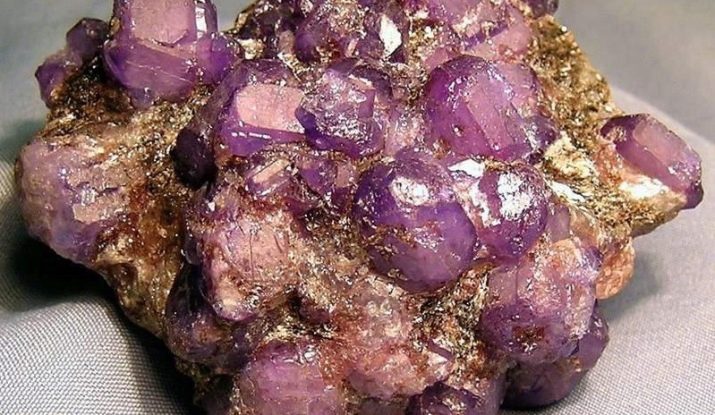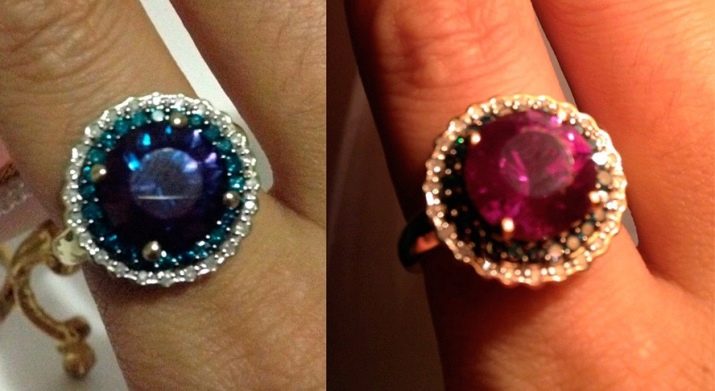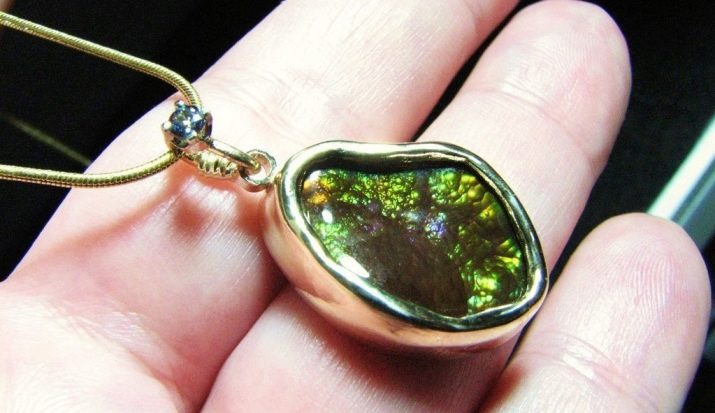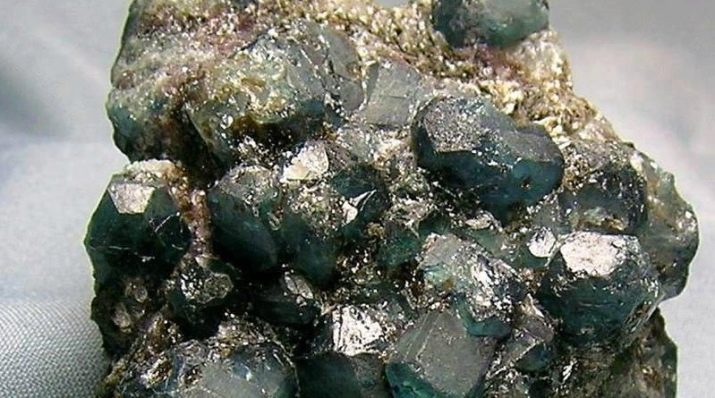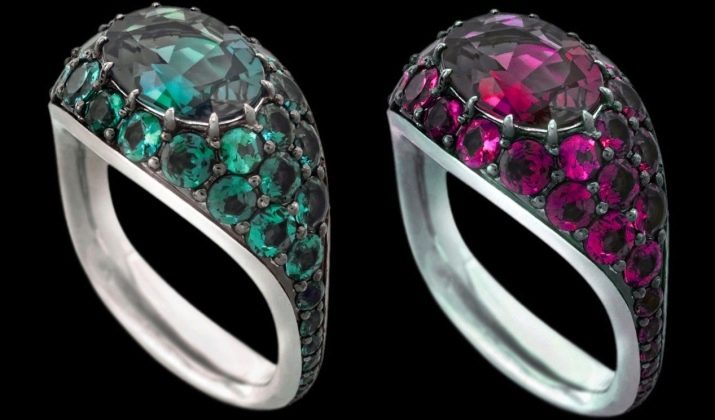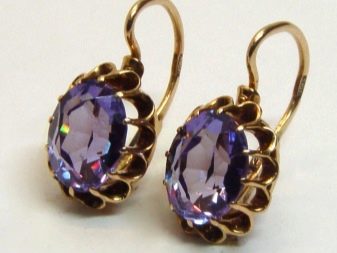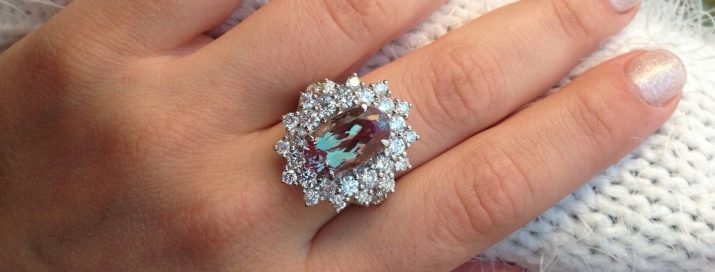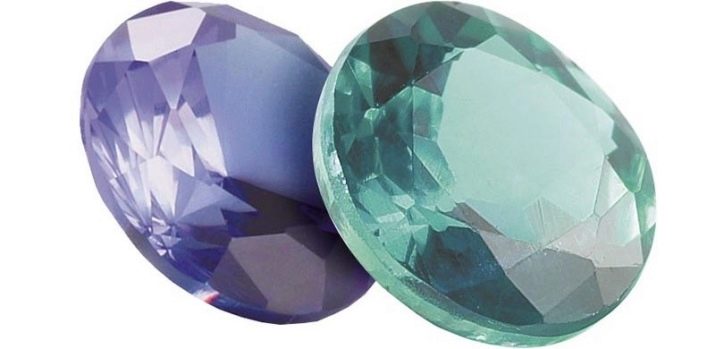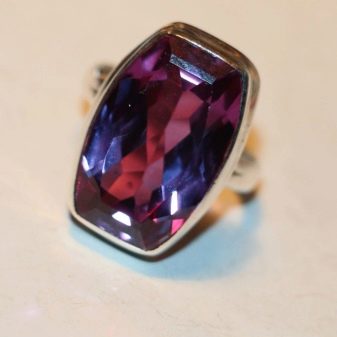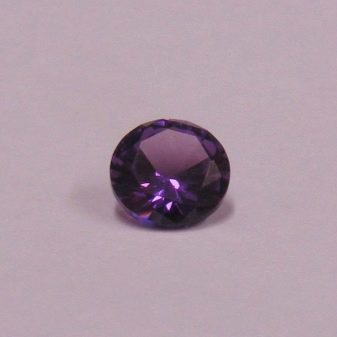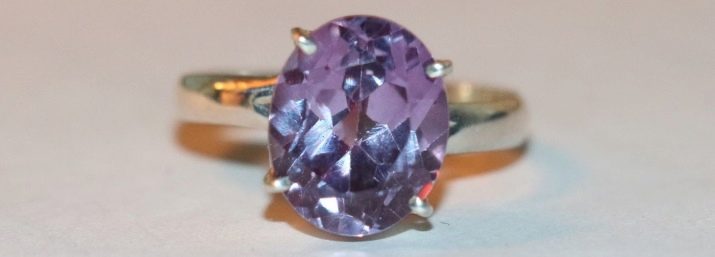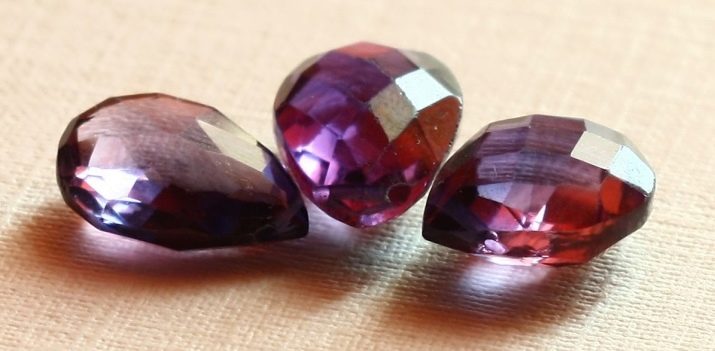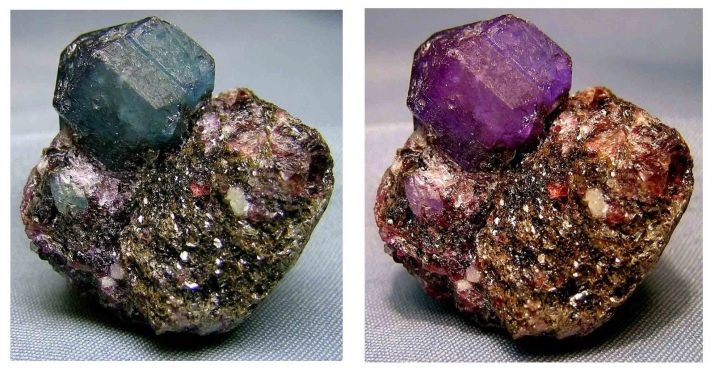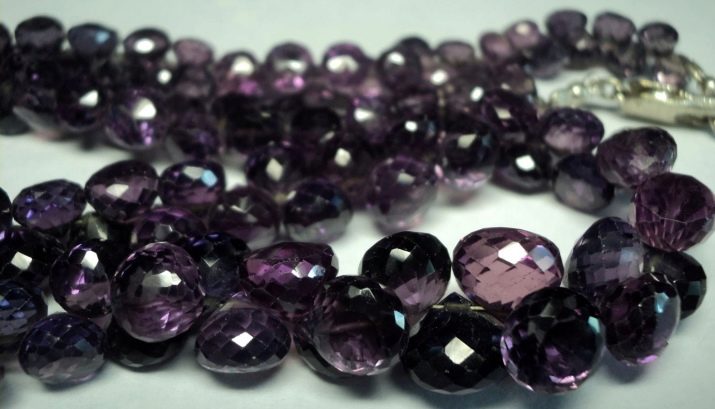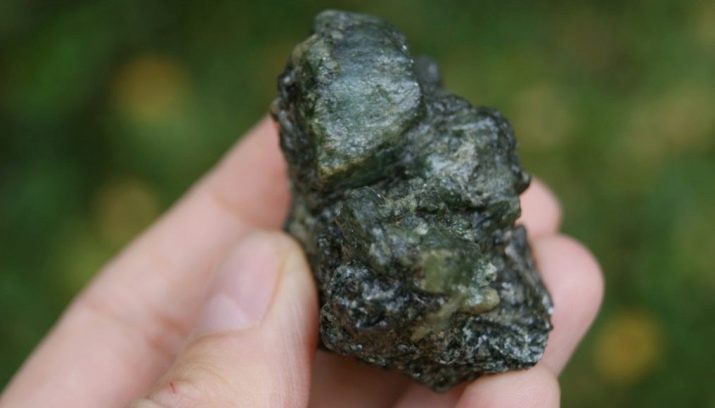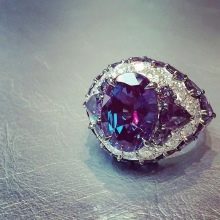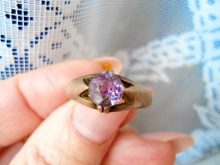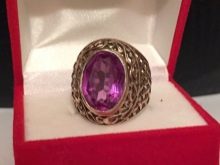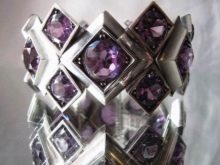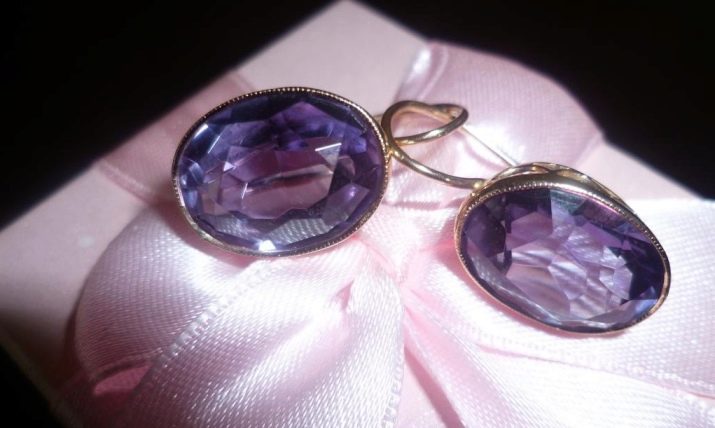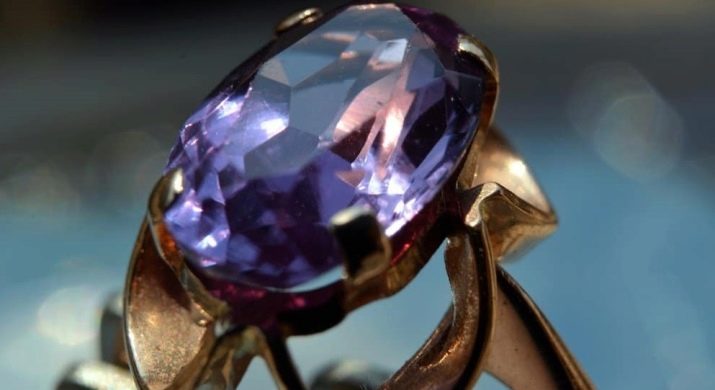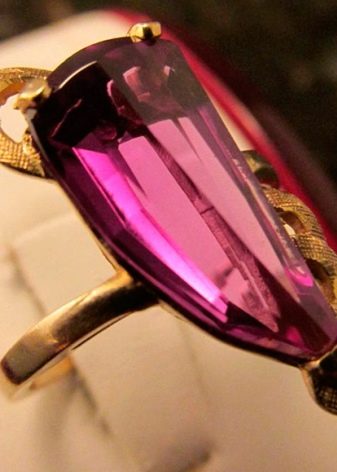Alexandrite: what does it look like, what properties does it have and to whom?
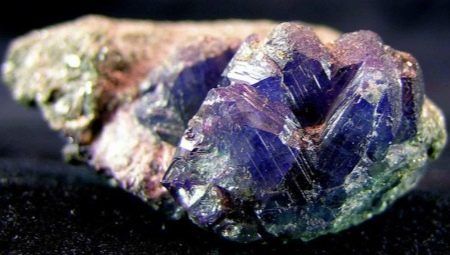
Alexandrite is a unique natural mineral that can change its color depending on the brightness of the light. There are always many of the most incredible legends around this mystical stone, and even the story of its discovery has different versions. According to one of them, the precious mineral was discovered by the Finnish scientist Nordenskjold in the Urals in 1834. It was assumed that the green color of the stone was nothing more than an emerald, but the scientist decided to examine in detail his evening in a calm and comfortable setting. However, in the light of candles, Nordenskjold saw in front of him a crystal not of green, but of a bright red color. Subsequently, the stone was given a name in honor of the future emperor of the Russian Empire, Alexander II, who in 1834 celebrated his 16th birthday.
Another version of the discovery of alexandrite tells us that the precious gem was found at an emerald mine located near Ekaterinburg, and this happened in 1833. To explore the mineral was sent to St. Petersburg, where L. A. Perovsky concluded that the stone found was not an emerald at all, since it has a slightly higher hardness and differs from emerald in its composition. The events described took place on the eve of the 16th birthday of the future Emperor of Russia Alexander II, and wanting to make a pleasant gift to the royal family, the scientist called the mineral found alexandrite.
Alexander II liked the unusual mineral that could change color, and he always considered him to be his talisman, and after him the aristocrats had a fashion for jewelry with this precious stone. For the gem stuck even the second name - "imperial stone."
Later, after the assassination of Alexander II, which occurred in 1881, alexandrite had a bad reputation and soon this mineral became a symbol of widowhood, sadness and loneliness.
Description
Alexandrite is a true natural mineral consisting of chrysoberyl mixed with chromium. The stone belongs to anisotropic crystals that can change their color in the rays of the light flux passing through it relative to the optical axes. Daylight, passing through chromium ions, colors the crystal in green shades, and in the evening artificial light the mineral looks violet-cherry, purple or rich crimson. There are alexandrites that have opalescence or, as this phenomenon is also called, the effect of a cat's eye. Specialists call such gems stones-cimophans.
Today, alexandrite is known as a jewelry colored gem of the first category.
Untreated alexandrite is opaque, but after jewelry grinding it can be transparent or translucent with a pronounced glassy sheen.
Alexandrite is mined in mica schist, pegmatite deposits or granite - this is where inclusions of these minerals are found among the main rock. In the voids of the rocks, alexandrite is found in the form of the so-called drusen.. Friendships are multiple crystals that are placed together on one common base. Gemstone mining in Russia was carried out mainly in the Urals and, until 1995, was carried out mostly on the territory of the Malyshevsky deposit, which was considered the largest not only in Russia, but also in Europe.However, during the long, nearly 100 years of use, the field was fully developed and closed.
Today, precious alexandrites are entering the world market from the USA, Sri Lanka, Brazil, Africa, Madagascar, and India. Stones from different parts of the world have their own coloring features. For example, African minerals have a low contrast of color changes, Brazilian gems are translucent, and Indian stones have a blue and turquoise color. However, the standard of quality alexandrite to this day is considered only the Ural gems.
Kinds
The color of precious alexandrites directly depends on their deposit and the structure of chromium, which is part of the mineral. Estimation of the value of the stone is determined by professional jewelers precisely by the color range of the gem. Color play of natural alexandrite, as a rule, can range from blue-green in daylight to dark crimson with artificial backlighting. There is no consensus on what shade of chrysotile berbill is the most valuable in jewelry making. Each professional is guided by his preferences and experience - someone likes deep purple hues, and someone believes that the most valuable copy has a rich green color.
Some alexandrites may look beautiful only at certain times of the day or with good lighting, while the rest of the time remain unremarkable.
Ural alexandrite jewelers around the world are considered the most valuable because of the depth of the color ranges and the brightness of color tones. In daylight, minerals of Ural origin show violet, pink, blue and classic green shades. African and Brazilian stones in the sunlight shimmer with pure blue and green tones, while transferring minerals to a source of artificial light, the color of the stones will drastically change to bright purple.
Alexandrite is mined not only in various shades, but also in different sizes. Basically, the size of the extracted gems does not exceed 1 carat. But there are surprising exceptions - the largest precious mineral consisting of 22 crystals was discovered in the Urals in the Emerald Mine, its weight was 5.38 kilograms.
Now this wealth of Russia is kept in the Mineralogical Museum of Moscow and was given the name “Druza Kochubey”.
Becoming the owner of this alexandrite at all times was quite difficult. Previously, with the existence of the USSR, it was impossible to buy products with an imperial stone for good reason in the free market. All available stones in the country along with their owners were strictly registered with the competent authorities. Often under the precious alexandrite, a similar semiprecious stone corundum or another natural mineral was produced, which contained chromium and vanadium in its composition. But even such gems were rare in the jewelry market. Nowadays, real natural alexandrite can be purchased only from collectors of rare jewelry and this is considered to be an incredible success.
Genuine and faceted alexandrite, due to its rarity and uniqueness in the global jewelry market, may have a value even higher than that of a diamond.
physical characteristics
Scientists believe that in order for chrysoberyl called alexandrite to form in the rock, chromium and beryllium must interact, which in itself is a rare occurrence. In addition to these conditions, silicon should not be present in the crystal, since with its presence the mineral turns into an emerald. Taking into account these difficult circumstances, chrysotile beryl minerals in nature are formed very rarely. However, alexandrites are found not only with emeralds, but also with sapphires - these are the quirks of nature.
Alexandrite is a stone that can hardly be called particularly strong, although its Mohs hardness is 8.5 units, and the density ranges from 3.5 to 3.8 grams per cubic centimeter. When the mineral is fractured, an uneven, fibrous surface of the edge is formed. The crystal lattice of this natural nugget has a rhombic structure - this means that each crystal has 3 axes that intersect at equal angles.
Considering the fragility of the imperial stone, cutting and fixing the stones in the frame is a rather risky process, since the stone can crack during processing, and it becomes especially fragile when squeezed. Years of experience show that the risk of cracking is greatest for stones weighing more than 1 carat. Knowledgeable and responsible jewelers are unlikely to take up the repair of the product with alexandrite, given its features.
By the way, natural alexandrites rarely weigh more than 1 carat, so buying a product with large stones, you need to beware of fakes.
Properties
In Russia, the imperial stone due to a confluence of circumstances - the death of Emperor Alexander II and the consequences of the First World War, acquired ill-fame, meaning a grief, loss of a loved one and loneliness.
Alexander II was very fond of the gem given to him and wore a ring with this stone, never parting with it. However, on March 1, 1881, for some unknown reason, the king did not put on a ring with alexandrite and was killed that day. Such a confluence of events looks somewhat strange, if you also know the fact that on March 1 in magic circles is considered one of the most difficult and unhappy days of the year - according to legends, Judas stumbled on that day.
However, in other parts of the world, chrysotile beryl is more loyal and sees only good in it. Because of their unique ability to change color, various magical properties are attributed to alexandrite — this is understandable, because everything that cannot be explained, ordinary people are used to refer to the category of miracles.
In Russia, it is believed that alexandrite is able to strengthen the gift of intuition and prophecy, therefore mediums use stone to make various talismans and amulets that help not only to predict future events, but also protect their owner from evil eye and damage. In addition, it was believed that the stone chameleon can cure alcohol dependence. To do this, alexandrite had to be left in a container with water all night, and after waking up in the morning, before breakfast, drink this water.
According to eyewitnesses, this technique helped to get out even from long heavy drinking bouts.
In India, the miracle stone is considered a symbol of health, longevity and financial prosperity. The first mention of it contains an ancient treatise called "Mahabharata", where alexandrite is compared with the peacock feather and called it "peacock eye". Not every person can afford an amulet with such a rare stone, but the owner of such an amazing treasure was considered lucky in all undertakings and vital matters.
In Europe, alexandrite is considered a stone that attracts good luck and helps to establish new relationships, not only romantic, but also businesslike.
This changeable gem, in the opinion of knowledgeable people, improves mood, heals depression, helps a person to discover talents and previously dormant creative abilities, and also contributes to the attainment of stable financial independence.
Who is suitable?
The value of alexandrite for a person, according to astrologers, is largely determined by the zodiac constellation under which he was born, so not all zodiac signs can wear alexandrite. Natural stone is very strong and only people born under the signs of Aquarius, Gemini, Leo and Scorpio can cope with its energy.
Astrology ascribes special outstanding qualities to these signs, among which are will, strength and courage.
Alexandrite affects each of these signs in its own way.
- Aquarius. Gem enhances the already high intuition of these people, and in addition, allows them to more easily establish interpersonal relationships with almost any person. Aquarius is known to the world as inborn peacemakers and alexandrite strengthens this innate ability in them, helping to achieve goals in many endeavors related to human relationships.
- Twins. Alexandrite gives this sign calmness and discretion. It will be easier for the owner of the stone to avoid empty fuss and vain anxiety inherent in this sign, and in addition, he will have the opportunity to apply weighted and thoughtful decisions in all important areas of life.
- a lion. The imperial stone strengthens the power of people born under this sign of the zodiac, directing their energy to the creative channel. Alexandrite enhances the sense of justice, ambition and personal charisma of its owner. With the help of this mineral, Lions can conquer many peaks and achieve absolutely any goal.
- Scorpio. Alexandrite strengthens the moral strength and mind of this sign several times. Thanks to the talisman of this gem Scorpions will be able to defeat all their enemies and circumvent any life obstacles. In addition, these people will have a real opportunity to grow spiritually and discover new horizons in the spheres of life that interest them.
Despite the fact that the imperial stone is intended for strong spirit people, astrologers do not recommend it to use Taurus and Aries. The fact is that both of these signs are prone to uncontrolled outbursts of aggression and alexandrite will only reinforce this undesirable manifestation of their character.
Virgins with Cancer cannot energetically cope with alexandrite - the stone will enhance their emotionality, and also shake their mobile energy without that, which will lead to numerous troubles in life.
It is believed that for a more complete disclosure of the potential of precious alexandrite it must be worn in a frame of pure gold. Best of all, if the jewelry will be made in the form of a massive male ring or female ring. It is good to combine an imperial stone with diamonds, amethysts, sapphires, garnets and topazes.
During tsarist Russia, when alexandrite became a favorite jewel in an aristocratic society, women wore this precious gem in combination with two diamonds, which were a symbol of autocracy. Knowledgeable people believed that if alexandrite was worn in combination with jewelry made from other stones, then it was necessary to put on the gem last, after all other jewelry, but it could only be removed last - now it may seem naive, but in those times were exactly like that.
How to distinguish a natural stone from a fake?
Since the demand for the mineral chrysotilberil was at all times high, and natural stones were not enough to meet this demand, the alexandrites learned to grow by artificial means. For the first time in our country, this event occurred in 1973. The synthetic analogue of a stone grown in the laboratory by the hydrothermal method is not cheap, and the gems obtained in this way possess the properties of a game of color, but not to the extent that it is inherent in this natural mineral. A similar gem can be grown on corundum.
Stones grown by synthetic means are different from the natural mineral, but they are not considered to be fakes.
It is considered to be a great success even to acquire a synthetic analogue of alexandrite, since their number is still small due to the high cost of synthesis under laboratory conditions.
To distinguish a fake from the real natural alexandrite, experts recommend paying attention to the following points.
- Poor quality fakes are too soft and, if desired, they can be easily scratched with a sharp object.
- Unnatural stones can not give that game the colors that are inherent in natural minerals - this is especially clearly seen in their spectral analysis.
- Counterfeit gems are arbitrarily large at a surprisingly low price, whereas natural minerals rarely weigh more than 1 or a maximum of 2 carats and are very expensive. The price in the jewelry market of natural chrysotileurel varies from 5 to 37 thousand dollars per carat.
- Unreal alexandrite gives a violet spectrum of shades, and this spectrum is predominant, whereas natural chrysotile beryl has a basic range of colors green and purple, and violet shades smoothly turn into yellow and orange reflections, which can be seen during spectral analysis.
- This natural mineral always has in its composition some other inclusions of rock or areas of turbidity, while its fake will always be perfect purity and transparency.
Often, precious alexandrites can give out any other stones that contain chrome. Most often, corundums consisting of aluminum and vanadium oxides give out a wonder-gem. Only a professional can determine the authenticity of natural chrysotile beryl by examining the mineral with a spectroscope — at home and “by sight” this is not realistic.
At present, jewelery with the use of precious imperial stone is made only on order and for considerable money. It is very difficult to find and purchase pre-revolutionary products in Russia, since most of them were exported to Europe by the emigrants during the revolution. The bulk of such jewelry is now irretrievably lost - gold and silver have been melted down, and stones are stored as a separate jewel in private collections.
To buy such alexandrites or old jewelery with their use is possible only at specialized jewelry auctions, where the cost of these jewels is extremely high, and there are quite a few who want to buy an unusual stone.
Modern professionals in the field of jewelry are well aware that literally 99% of all the stones that you see in jewelry are synthetic analogues of natural alexandrite. The only question is, what quality are these analogues. To grow alexandrite by artificial means is a long and costly procedure for finances.
Stones of artificial origin are used in expensive jewelry, while cheap imitations are used mainly for the manufacture of jewelry.
How to wear?
Alexandrite was called the imperial stone for good reason, because to wear it means to subject your destiny to changes and numerous trials. Not every person is capable of this, but only one who has the power of will and spirit. If you become the proud owner of this unique stone, it may happen that alexandrite will be energetically difficult for you, and the trials of fate will be beyond your ability. According to long-term observations, it has been revealed that in order to level the influence of powerful alexandrite, it should be worn next to other gems with softer energy. In the old days, it often happened that a person simply refused to use jewelry with this complex stone, concluding that alexandrite does not suit him.
Jewelers are advised to wear alexandrites in sets and there are two reasons for this: in a set jewelery always looks more dignified and attractive, and besides, it is considered that only in this way loneliness and widowhood can be alienated from oneself. It is difficult to judge how fair such an opinion is, and if you want to be convinced of this, you can try to experience the effect of alexandrite on yourself.
It is appropriate to wear Alexandrite at any time of the day - it all depends on the style of the jewelry and the neighborhood with other stones.
For example, alexandrites in combination with diamonds belong to evening types of jewelry, and if you wear a royal stone in the form of a single talisman or ring, then if you wish, you can not remove such jewelry all day and night.
There is an opinion that chrysotilberil looks especially beautiful if its owner has brown, black or green eyes. Experienced people said that alexandrite suits a man more than a woman. By acquiring this precious gem, a woman can condemn herself to loneliness, while a man acquires strength and confidence with this stone. As a talisman, alexandrite manifests itself most of all in men, since the masculine energetics are more in tune with this stone than the feminine.
How to care?
Knowledgeable jewelers know that extreme caution is required when processing natural alexandrites - one wrong or excessive pressure, and a beautiful stone can be covered with a network of cracks. Synthetic analogues of this gem are much more durable - they are resistant to processing and heating.
In addition, natural chrysotile beryl is unstable when exposed to alkaline solutions - they increase its fragility and reduce the natural brightness.
Given these features, products with alexandrite must be protected from impacts and, of course, you should not expose them to chemical components.
So that the unique gem does not lose its brilliance, it is unacceptable to engage in jewelry in works that may lead to deformation or contamination of the jewel. Cleaning jewelry with a precious imperial stone is allowed only with a warm soap solution of weak concentration, to which you can add a few drops of ammonia. Such a composition not only helps to clear the stone, but also returns shine to its rim. After processing, the jewelry is rinsed with clean water and gently rubbed with a soft, lint-free cloth. The imperial stone requires a respectful attitude to yourself - such jewelry should be stored in a special jewelry box with soft walls and it is best if this box is placed in a dark and cool place.
If a product with a real alexandrite needs repair, try to contact a competent and proven jeweler. Often, in the process of setting a stone in the frame or with the incorrect use of acids and the action of high temperatures, the natural mineral may lose its lively shine or become covered with a network of cracks, which will be very difficult and sometimes impossible to eliminate. Sometimes for treating a network of small cracks using the method of impregnation of the gem with natural oils, for example, using cedar oil of high density.
However, this is only a temporary way to eliminate the defect of a natural stone, because over time, the oil tends to dry out and evaporate, which means that the problem will again need to be solved.
More information about alexandrite can be found in the video below.

